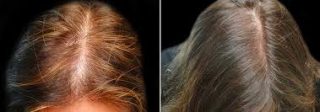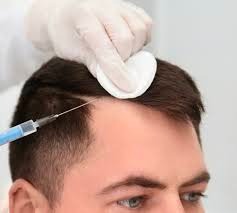Get the Best Hair Stem Cell Therapy in Pakistan Islamabad
Hair loss, medically known as alopecia, affects millions of individuals worldwide, causing not only physical but also emotional distress. While various treatments have been developed to combat hair loss, stem cell therapy has emerged as a promising and revolutionary approach in the field of dermatology. Stem cell transplant for hair regrowth offers new hope to individuals struggling with hair loss, presenting a safe and effective alternative to conventional treatments.
What are Stem Cells?
Similar to the building blocks of the body are stem cells. They can differentiate into many cell types with distinct functions. When given the correct conditions, stem cells grow in number to produce new stem cells or specialized cells such as bone, brain, heart, muscle, or blood cells. Stem cells are unique in that they can differentiate into several types of cells, unlike other types of cells.
What is Stem Cell Therapy in Pakistan Islamabad?
In cutting-edge hair stem cell transplant, stem cell treatment in Pakistan uses special cells to help the body repair and rejuvenate different hair tissues. Referred to as mesenchymal stem cells (MSCs), these cells are more versatile and come with fewer ethical concerns compared to other stem cell types. They can change into various types of tissues, such as those found in muscles, bones, and cartilage. MSCs can be taken from various sources, including bone, tendon, skin, and the umbilical cord.
While these treatments aim to support the body in healing itself, reducing symptoms, and slowing down the progression of hair-related conditions, it’s important to note that they may not provide complete cures for certain issues. Over time, however, this approach has the potential to significantly enhance the quality of life for individuals dealing with hair concerns.
What Does Stem Cell Therapy Do?
In hair stem cell transplant, stem cells or their derivatives are used to repair and rejuvenate damaged or thinning hair. This innovative approach relies on the power of cells instead of relying on a limited supply of donor hair follicles. It represents an exciting breakthrough in the field of hair stem cell transplant.
How Does Stem Cell Therapy in Pakistan Islamabad Work?
Stem cell therapy works to improve the condition of the body by harnessing the special abilities of stem cells. Specifically, mesenchymal stem cells, found in adults, are utilized for their ability to renew themselves and transform into different cell types in a specific region of the body, in this case, the scalp. This process provides the anti-inflammatory and other benefits of stem cell treatment, making it a potential approach for enhancing hair health.
Stem Cell Transplant Procedure
Stem cell transplant for hair regrowth operates on the principle that stem cells possess regenerative properties that can rejuvenate dormant or weakened hair follicles. The procedure typically involves the following steps:
- Extraction of Stem Cells: Stem cells can be harvested from various sources, such as the patient’s own body fat (adipose tissue) or bone marrow. These sources offer a rich reservoir of stem cells that can be easily accessed.
- Processing and Isolation: Once harvested, the stem cells are processed and isolated to obtain a concentrated solution of potent regenerative cells. These isolated cells contain growth factors and cytokines that promote tissue repair and regeneration.
- Injection or Application: The isolated stem cell solution is then injected into the scalp in areas experiencing hair thinning or baldness. Alternatively, stem cell-derived growth factors can be topically applied to the scalp.
- Stimulation of Hair Follicles: The growth factors and cytokines released by the transplanted stem cells work to stimulate the existing hair follicles, promoting increased blood flow, cell proliferation, and ultimately, hair regrowth.
Diseases Treated by Stem Cell Therapy
Diseases treated with stem cells are vast, but the most common ones are as follows:
- End-Stage Liver Disease
- Burns
- Stroke
- Skin Diseases
- Hair Conditions
- Bone Fractures
- Macular Degeneration
Understanding Hair Loss and its Causes
Hair loss can result from multiple factors, including genetics, hormonal imbalances, medical conditions, medications, and aging. The most common form of hair loss is androgenetic alopecia, often referred to as male-pattern baldness and female-pattern baldness. These conditions are primarily linked to genetics and hormonal influences.
Benefits of Stem Cell Treatment in Pakistan
Stem cell transplant for hair regrowth offers several advantages:
- Hair Follicle Regeneration: The application of stem cells encourages the creation of new, healthy hair by stimulating the regeneration of hair follicles.
- Increased Hair Thickness: By increasing the density of the current hair strands, the therapy can help produce thicker, stronger hair.
- Better Hair Health: Stem cells include qualities that can lessen problems like dryness and brittleness and enhance the general health of the scalp and hair.
- Anti-Inflammatory Effects: Stem cell therapies frequently have anti-inflammatory qualities, which may help with diseases that worsen hair loss.
- Minimal Invasiveness: Unlike surgical hair transplant procedures, stem cell therapy is minimally invasive and does not require extensive incisions or sutures.
- Reduced Risk of Rejection: Using the patient’s own stem cells eliminates the risk of immune rejection or adverse reactions associated with foreign substances.
- Long-Term Outcomes: Because stem cell therapy targets the underlying reasons for hair loss, it could produce more lasting outcomes than certain conventional hair treatments.
While stem cell therapy for hair regrowth is a promising avenue, it’s important to note that more research is needed to establish its long-term efficacy and safety. Clinical studies have shown positive outcomes, but larger trials are required to validate its widespread applicability. As research continues to advance, stem cell therapy could revolutionize the field of dermatology by offering a game-changing solution for hair loss.
Stem cell transplant for hair regrowth holds the potential to redefine the way we approach hair loss treatment. By harnessing the body’s innate regenerative abilities, this revolutionary approach offers a safe, minimally invasive, and promising alternative to conventional treatments. While further research is needed, the strides made in stem cell therapy pave the way for a future where hair loss may no longer be an irreversible condition, bringing renewed confidence and self-esteem to individuals grappling with this concern.
Types of Stem Cell Transplants
- Autologous Stem Cell Transplant: In this kind, following radiation therapy, a patient’s own stem cells are extracted and subsequently reinfused into their body.
- Allogeneic Stem Cell Transplant: In this type of transplant, donor stem cells are usually closely related genetically, like a brother.
- Syngeneic Stem Cell Transplant: Using stem cells from an identical twin, syngeneic transplants eliminate rejection issues, much like allogeneic transplants do.
- Hematopoietic Stem Cell Transplant: This kind of transplant focuses on hematopoietic stem cells, which can differentiate into different blood cell types. It is frequently used to treat blood-related illnesses.
- Mesenchymal stem cells: These stem cells can develop into a range of cell types and are used in mesenchymal stem cell therapy. Its potential for regeneration is being investigated in several medicinal domains, including hair treatment.
What are the Stem Cell Therapy Side Effects?
Administering stem cell therapies, whether authorized or not, may result in adverse events. It’s essential to understand that unapproved stem cell treatment in Pakistan includes some side effects and that a trained medical team may not be able to manage the stem cell therapy side effects involved. Injecting a person’s own tissue into a different physical area has resulted in incidents of serious sickness and even blindness.
Financial risk is another aspect of obtaining therapies from not doing therapy from best stem cell therapy clinic. People must pay large expenses out of their own pockets for these procedures because insurance typically does not cover them, and there is no assurance that their would be no stem cell therapy side effects.
FAQs
1. What is Stem Cell Therapy Used for?
Stem cell therapy is used to treat a range of illnesses, such as blood abnormalities, degenerative diseases, hair conditions, and traumas.
2. Is Stem Cell Therapy Permanent?
The success of stem cell therapy varies depending on the medical condition being treated and the patient’s reaction. It is not always permanent.
3. How Successful is the Best Stem Cell Therapy in Pakistan?
The best stem cell therapy in Pakistan success rates vary from case to case and are dependent on the particular treatment and medical condition.
4. How Long Does Stem Cell Therapy Last?
The type of treatment and the patient’s condition are two elements that affect how long stem cell therapy effects lasts.
5. Is the Best Stem Cell Therapy in Pakistan Worth it?
A medical professional from the best stem cell therapy clinic should be consulted regarding the benefits of stem cell treatment, treatment goals, and the individual’s health status to determine the worth of stem cell therapy.
6. How Much Does Stem Cell Therapy Cost in Pakistan?
Stem cell therapy costs in Pakistan vary greatly; therefore, for the best stem cell therapy cost in Pakistan, it’s best to speak with medical professionals from the best stem cell therapy clinic about your particular needs.
Get Your Consultation Now


